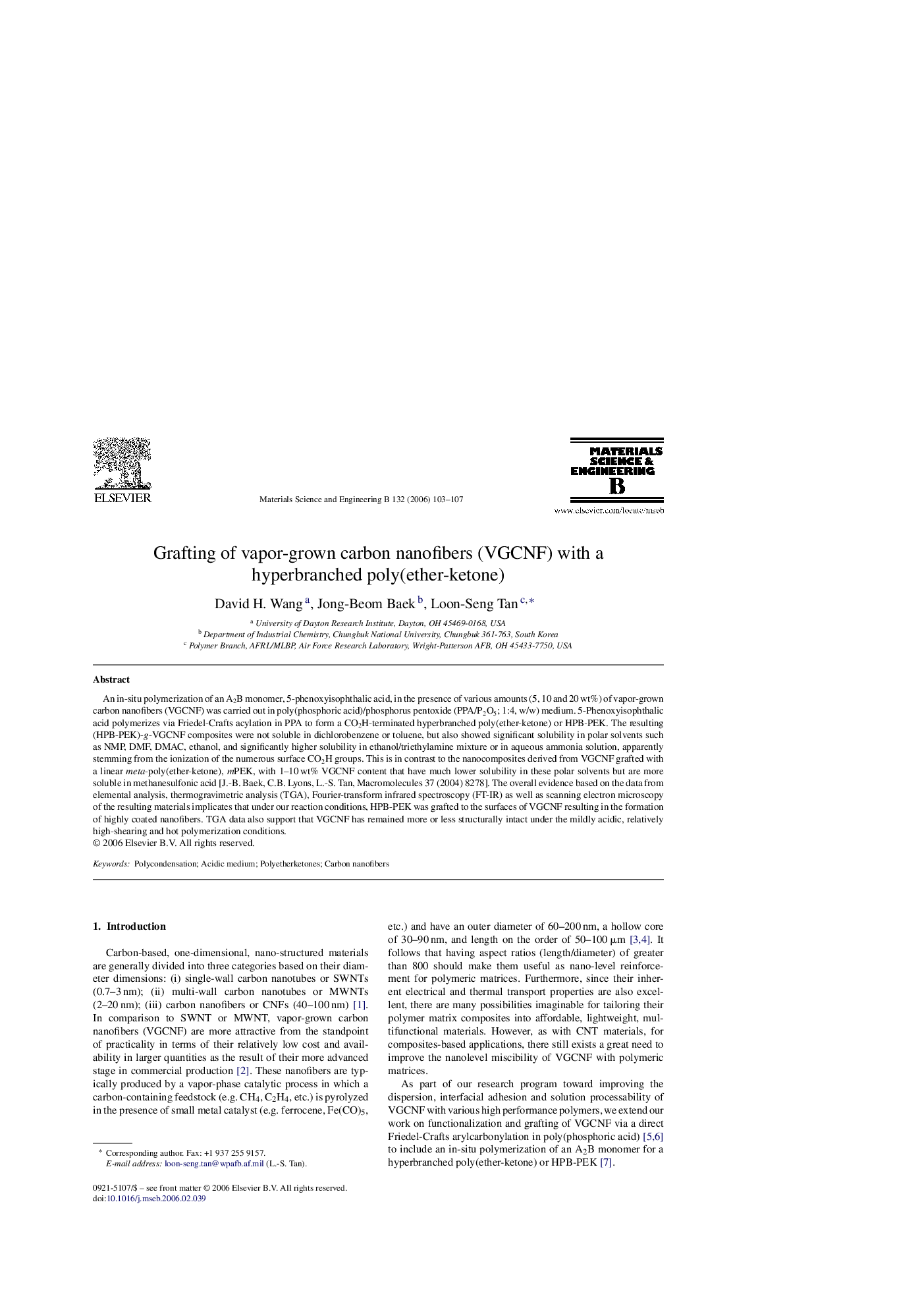| Article ID | Journal | Published Year | Pages | File Type |
|---|---|---|---|---|
| 1531954 | Materials Science and Engineering: B | 2006 | 5 Pages |
An in-situ polymerization of an A2B monomer, 5-phenoxyisophthalic acid, in the presence of various amounts (5, 10 and 20 wt%) of vapor-grown carbon nanofibers (VGCNF) was carried out in poly(phosphoric acid)/phosphorus pentoxide (PPA/P2O5; 1:4, w/w) medium. 5-Phenoxyisophthalic acid polymerizes via Friedel-Crafts acylation in PPA to form a CO2H-terminated hyperbranched poly(ether-ketone) or HPB-PEK. The resulting (HPB-PEK)-g-VGCNF composites were not soluble in dichlorobenzene or toluene, but also showed significant solubility in polar solvents such as NMP, DMF, DMAC, ethanol, and significantly higher solubility in ethanol/triethylamine mixture or in aqueous ammonia solution, apparently stemming from the ionization of the numerous surface CO2H groups. This is in contrast to the nanocomposites derived from VGCNF grafted with a linear meta-poly(ether-ketone), mPEK, with 1–10 wt% VGCNF content that have much lower solubility in these polar solvents but are more soluble in methanesulfonic acid [J.-B. Baek, C.B. Lyons, L.-S. Tan, Macromolecules 37 (2004) 8278]. The overall evidence based on the data from elemental analysis, thermogravimetric analysis (TGA), Fourier-transform infrared spectroscopy (FT-IR) as well as scanning electron microscopy of the resulting materials implicates that under our reaction conditions, HPB-PEK was grafted to the surfaces of VGCNF resulting in the formation of highly coated nanofibers. TGA data also support that VGCNF has remained more or less structurally intact under the mildly acidic, relatively high-shearing and hot polymerization conditions.
